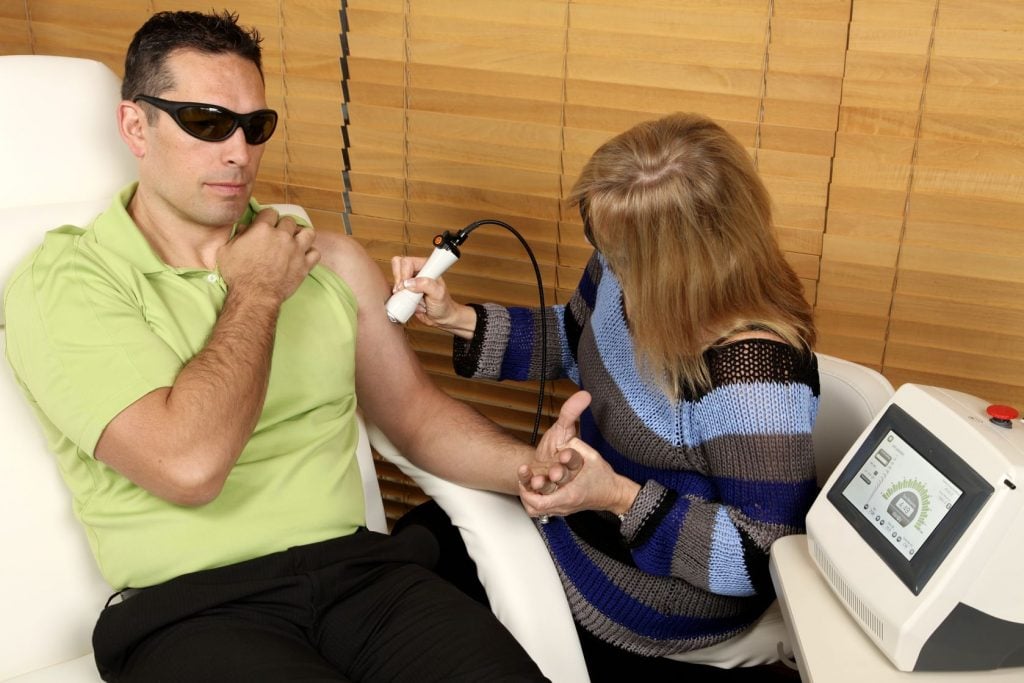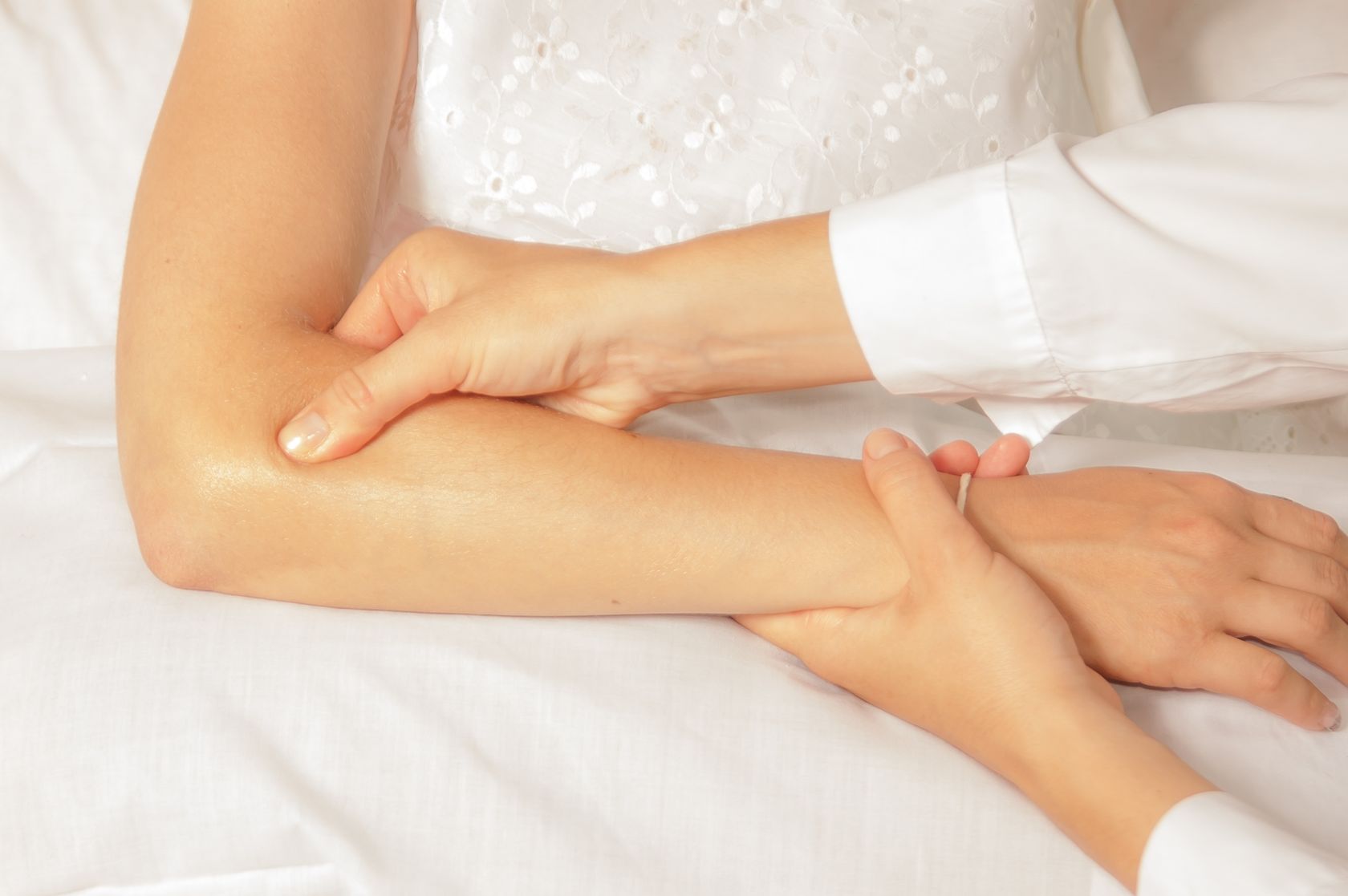Your cart is currently empty!
Tag: tennis elbow
-

Low Level Laser Therapy (Cold Laser)
Low Level Laser Therapy (Cold Laser)

What is Low Level Laser Therapy (LLLT)
LLLT or Cold Laser is a painless, non-invasive form of light therapy which is thought to stimulate a healing response in tissues such as muscles, blood vessels, bone, nerve, skin, ligaments, tendons and other connective tissue. The laser beam we use is in the infra-red range of the spectrum. Because it’s wavelength is beyond the red end of the spectrum of visible light, its beam is invisible.
Laser differs from visible light because it has a single coherent wavelength rather than a range of wavelengths (which are what give visible light it’s range of colours). Unlike light, a laser beam does not diverge, but remains parallel and this allows it to be focused in a precise way. Our Laser is different from medical Lasers used in surgery, as it does not generate heat and therefore cannot burn tissue (which is why it is sometimes called Cold Laser). Laser treatment is painless and there is no vibration or sound when it is emitted.
How does Low Level Laser Therapy work?
The simplest answer is that we don’t know. The main theory suggests that it affects metabolism at the level of the cells, bringing about chemical reactions which accelerate cellular metabolism. This is thought to result in more faster cellular repair and regeneration with the formation of healthy new cells. It may also work by improving the blood supply to an area. It may reducing pain by it’s effects on the nerve endings and by stimulation of the body’s own pain relieving chemicals (such as endorphins and seratonin).
What conditions seem to respond well to Low Level Laser Therapy?
Laser can be helpful for pain relief, reduction in swelling, promoting tissue healing and reduction in the formation of fibrous scar tissue.
Conditions reported in the scientific literature to respond to Laser include pain relief and tissue healing, especially:- Back Neck and Knee Pain
- Shoulder Pain
- Fibromyalgia and Chronic Pain
- Arthritis
- Carpal Tunnel Syndrome
- Tennis Elbow
- Ankle Sprains
- Tendinitis and Tendinosis
- Ulcers / Wound Healing
- Painful Scar Tissue
What is the Scientific Evidence for Low Level Laser Therapy?
LLLT is an emerging modality that looks like it will result in a multitude of effective new treatments. It has not yet gained widespread acceptance because the body of scientific research supporting it’s effectiveness is still small. More research needs to be done to show which conditions it is most useful for and what the doseage should be. Quite a lot of the current evidence comes from studies on animals such as mice, though there have been some encouraging human studies.
Free2Move recommends Low Level Laser Therapy as part of a normal Physiotherapy treatment programme rather than as a stand alone treatment. Because is is a relatively new treatment, results cannot be guaranteed.
What are the risks of Low Level Laser Therapy?
The main risk is to the retina of the eyes. The intense and focused beam can damage the eyes if it shines directly into them. Safety glasses are worn at all times during treatment to prevent this damage. As an additional precaution, the Laser beam is never turned on until it is placed on the skin. Because the Laser cannot be seen, a blue light indicates that the machine is working and is an added safety feature. Laser should not be done over the ovaries, testicles, thyroid or pregnant uterus. There are some other contraindications to Laser for which you should be screened by your therapist. Provided these precautions are taken there are no known negative side effects.
Read about Exercise, Imaging and Laser for Shoulder Pain
More info: Please call Free2Move on 0405 97 2211 or email info@free2move.com.au
-

Tendinitis or Tendinosis

Tendinitis or Tendinosis
Tendinitis and Tendinosis are distinctly different from each other and often misdiagnosed.
Tendinitis is caused by an inflammatory process. It’s often the result of repetitive strain on a tendon from overuse. Less often it’s caused by a specific event or injury. Treatment may include anti-inflammatory medications and rest.
If left untreated for 2 or 3 months it may progress to become tendinosis.
Tendinosis is thought to result from micro-trauma to a tendon resulting in degenerative changes and failure to heal. There may be weakness of the tendon’s structure, increasing the risk of rupture. It is more difficult to treat than tendinits. Anti-inflammatory medications and cortisone injections are usually not helpful. They may even worsen the problem.
Physiotherapy Treatment for Tendinitis / Tendinosis
Early diagnosis and treatment from an experienced Physiotherapist can make a huge difference to the outcome. At Free2Move we almost always prescribe exercises, because we believe that exercise and movement are essential to the long-term healing process. The right type and level of exercise helps improve circulation and stimulates the healing process. Exercises with put too much stress on the tendon could cause further damage.
Gentle stretches, self-massage techniques and eccentric strengthening exercises are often very helpful. Taping with stretchy ‘kinesiotape’ such as Rocktape helps reduce the load on the tendon so it can heal. Trigger point dry needling (a form of acupuncture) is often effective, as is Low Level Laser therapy.
We can also advise about how you can improve your ergonomics to reduce future strain on the area. It’s all part of our approach, which is to empower you to help yourself get better, rather than to become dependent on long-term treatment.
Examples of tendinitis which respond well to Physiotherapy treatment are Achilles Tendinitis, Tennis Elbow (lateral epicondylitis), Golfer’s Elbow (medial epicondylitis), Plantar Fascitis (causing foot pain), Patellar Tendinitis (causing knee pain) and Supraspinatus Tendinitis (causing shoulder pain).
Read More about Physiotherapy treatments offered at Free2Move
-

Tennis Elbow

Tennis Elbow
Tennis Elbow
Tennis Elbow (Lateral Epicondylitis) is the most common type of elbow pain and affects the lateral epicondyle. The epicondyle is the bony protuberance on the outer side of the elbow.
Several long slender muscles of the forearm assist in manipulating, gripping and lifting objects with the hand. Their tendons attach to the lateral epicondyle. This point of attachment is susceptible to injury.
Signs and Symptoms of Tennis Elbow
In Tennis Elbow, pain often has a gradual onset. It may be felt as a dull ache. Sharp twinges may result from lifting or carrying heavy objects. Pain may be felt during of following prolonged wrist or elbow positions, for example when using a mouse or keyboard. Gripping objects tightly may also reproduce the pain.
The lateral epicondyle is usually very tender when pressed. The muscles in the back of the forearm, which extend the fingers and wrist are often found to be tight, especially extensor digitorum longus and extensor carpi ulnaris. Grip strength may be reduced.
Causes of Tennis Elbow
Contrary to popular belief Tennis Elbow is not always caused by playing tennis. It can also be the result of a recent increase in any activity which involves repetitive, sudden, awkward or forceful movements of the wrists or fingers. Injury may be caused by a single sudden movement against resistance. Even more frequently though, it’s related to prolonged positions or repetitive minor strains.
Tennis elbow has become more common due to the use of computers and mobile phone. Poor ergonomics and postural issues are often causative factors.
Recent research suggests that Tennis Elbow may be caused by micro trauma to the tissues. Damage may occur at the point of attachment of these tendons to the bone or at the point where the fibres of several muscle merge to form a common tendon.
How We Can Help
Physiotherapy is usually the first step. It’s important to identify the cause of the pain. Activities may need to be temporarily modified so that strain on the area can be reduced.
At Free2Move we often use modalities such as low level laser therapy, trigger point dry needling (a western form of acupuncture), and specific massage techniques such as cross frictions. We also teach you stretches and self massage techniques you can do yourself, to help you recover in the fastest possible time. Care is needed with gripping, lifting and carrying. Strapping with stretchy kinesio tape is often effective in decreasing load on the tendon and reducing pain.
If you have had the pain for more than 6 weeks, it’s important to determine whether you actually have tendonitis or tendinosis. Imaging with ultrasound or MRI can help assess the extent of tissue damage and its location. Physios in Perth are now permitted to refer you for these tests.
-

Golfer’s Elbow

Golfer’s Elbow
Golfer’s Elbow (Medial Epicondylitis) is far less common that Tennis Elbow and affects the muscles which attach to the inner aspect of your elbow. These muscles that move the wrist and fingers and are involved in gripping and lifting. Repetitive over-use of these muscles or incorrect technique when playing racket sports, weight lifting or rock climbing can cause golfer’s elbow.
Physiotherapy Treatment will depend on whether the cause of the pain is tendonitis or tendonosis. At Free2Move in Mt Hawthorn Perth your physiotherapist will be able to assist with diagnosis and provide treatment and exercises to promote recovery.
Clinical Pilates and Feldenkrais are methods which help improve your posture and biomechanics to help prevent recurrence of injury.
Feldenkrais helps you become more aware of how you can use the larger more powerful muscles of your trunk to perform heavy work, while using the smaller muscles around the hands and elbows to do fine and precise movements.
Exercise Rehab may assist by improving your ability to utilise your ‘core’ muscles, the deeper muscle groups which are involved in stability, balance and postural alignment.
This enables you to take charge of your own health and well-being and help prevent future episodes of pain. Please discuss this with your Physiotherapist to work out the most suitable programme for your situation.
